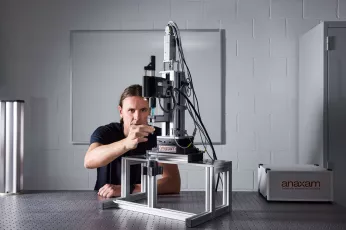Publication: Does needle clogging change the spatial distribution of injected drug in tissue? New insights by X-ray computed tomography
Prefilled syringes (PFS) are primary packaging materials that offer convenience and safety for subcutaneous injection of parenteral drug solutions. The current trend towards the development of increasingly concentrated drug solutions in PFS is leading to higher rates of needle clogging, which, in turn, results in increased injection forces and potential problems carrying out and completing PFS injections properly.
This study deploys tube-based X-ray and Synchrotron-based radiation microtomography to obtain high spatial resolution 3D-images of drug distribution patterns in the tissue. In this way it demonstrates for the first time that clogging of PFS needles can modify the injected drug distribution pattern in the tissue at the injection site.
Subcutaneous injection with a non-clogged needle results in a three-dimensional drug distribution pattern in the tissue. Tomographic images clearly show that the drug spreads primarily between the fat lobules, where the fibrous septa are expanded by the pressure of the interstitial drug solution. Subcutaneously injected liquid stays within the hypodermis and does not enter the muscle layer. The clogged syringes, which are formed by evaporation of water and solidification of drug solution in the needle tip, usually dissolve in the flow of the liquid during injection. In the initial injection phase, the liquid jet starts to escape the needle only through a narrow channel in the clog. The resulting high dynamic pressure can alter the distribution of the liquid in the tissue, causing a long tail of liquid that penetrates deep into the fibrous network of the subcutaneous layer.
Link: Publication


